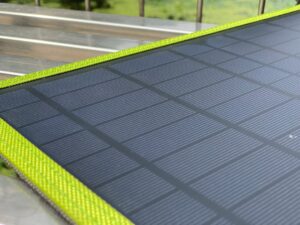Dry rot and termite damage can be insidious, often going unnoticed until significant harm has been done. Homeowners should be vigilant in recognizing the early signs of these issues to mitigate further damage. One of the most telling signs of dry rot is the presence of a musty odor, which indicates the decay of wood due to fungal growth.
This odor can often be detected in areas that are damp or poorly ventilated. Additionally, dry rot can manifest as a change in the wood’s texture, where it may appear cracked, brittle, or even crumbly. Homeowners should also look for discoloration or dark patches on wooden surfaces, which can signal the presence of moisture and fungal activity.
Termite damage, on the other hand, often presents itself through visible tunnels or galleries in the wood. These tunnels are typically found in structural beams, flooring, and even furniture. A common sign of termite activity is the presence of discarded wings near windows or doors, indicating that swarmers have emerged from their colonies.
Homeowners may also notice small piles of frass, which is a term for termite droppings that resemble sawdust. If wood sounds hollow when tapped, it may indicate that termites have consumed the interior, leaving only a thin veneer of wood intact. Recognizing these signs early can save homeowners from costly repairs and extensive damage.
Key Takeaways
- Recognizing the Signs of Dry Rot and Termite Damage:
- Look for cracked or brittle wood, hollowed-out areas, and the presence of mud tubes or termite droppings.
- Understanding the Causes of Dry Rot and Termite Infestation:
- Moisture, poor ventilation, and wood-to-soil contact can lead to dry rot, while termites are attracted to moisture and wood.
- Inspecting Wood Framing for Dry Rot and Termite Damage:
- Use a screwdriver to probe wood for soft spots, check for termite tunnels, and look for signs of water damage.
- Treating Dry Rot in Wood Framing:
- Remove and replace affected wood, improve ventilation, and apply fungicides to prevent further damage.
- Addressing Termite Infestation in Wood Framing:
- Use bait stations, liquid termiticides, or fumigation to eliminate termites and prevent future infestations.
- Preventing Future Dry Rot and Termite Damage:
- Keep wood dry, maintain proper ventilation, and create barriers between soil and wood to prevent moisture buildup.
- Repairing and Replacing Damaged Wood Framing:
- Cut out and replace damaged sections, reinforce weakened areas, and seal wood to prevent future damage.
- Seeking Professional Help for Severe Cases of Dry Rot and Termite Damage:
- Consult with a professional for extensive dry rot or termite infestations to ensure thorough treatment and prevention.
Understanding the Causes of Dry Rot and Termite Infestation
Dry Rot Causes
Dry rot is primarily caused by a specific type of fungus that thrives in damp conditions. When wood is exposed to moisture—whether from leaks, poor drainage, or high humidity—it becomes susceptible to fungal growth. This fungus can spread rapidly through wood structures, leading to significant decay if not addressed promptly.
Conducive Environments
Homeowners should be aware that even seemingly minor water issues can create an environment conducive to dry rot, making regular inspections and maintenance crucial. Similarly, termite infestations are typically driven by the availability of food sources and conducive living conditions.
Termite Infestations
Subterranean termites, for instance, require contact with soil and moisture to thrive. They often enter homes through cracks in foundations or gaps around plumbing and utility lines. Wood that is in direct contact with soil is particularly vulnerable to termite attacks. Additionally, conditions such as poor ventilation in crawl spaces or attics can create a humid environment that attracts these pests.
Proactive Measures
Understanding these causes allows homeowners to take proactive measures to protect their properties from both dry rot and termite damage.
Inspecting Wood Framing for Dry Rot and Termite Damage

Conducting a thorough inspection of wood framing is essential for identifying potential dry rot and termite damage before it escalates into a more serious problem. Homeowners should begin by examining areas that are prone to moisture accumulation, such as basements, crawl spaces, and around windows and doors. Using a flashlight, they can look for signs of discoloration or soft spots in the wood.
A simple test involves pressing a screwdriver into the wood; if it penetrates easily, this may indicate decay or infestation. In addition to visual inspections, homeowners should also be aware of any changes in their home’s structure. Sagging floors, cracks in walls, or doors that no longer close properly can all be indicators of underlying issues related to dry rot or termites.
It is advisable to check for any signs of water leaks from plumbing fixtures or roofs that could contribute to moisture problems. By being proactive in their inspections, homeowners can catch potential issues early and take appropriate action before they lead to extensive damage.
Treating Dry Rot in Wood Framing
| Treatment Method | Effectiveness | Cost |
|---|---|---|
| Chemical Treatment | Highly effective | Moderate |
| Heat Treatment | Effective for surface rot | High |
| Replacement of Affected Wood | Most effective | High |
Once dry rot has been identified in wood framing, prompt treatment is essential to prevent further deterioration. The first step in addressing dry rot is to eliminate the source of moisture that is fueling the fungal growth. This may involve repairing leaks, improving drainage around the foundation, or enhancing ventilation in affected areas.
Once the moisture issue is resolved, homeowners can begin the process of treating the affected wood. Treatment options for dry rot include removing and replacing severely damaged wood sections. In cases where only a portion of the wood is affected, homeowners may choose to use a wood hardener or epoxy resin to reinforce the remaining structure.
These products penetrate the wood fibers and provide additional strength while preventing further fungal growth. It is crucial to follow up with preventive measures, such as applying fungicides to protect against future infestations and ensuring that the area remains dry and well-ventilated.
Addressing Termite Infestation in Wood Framing
Addressing a termite infestation requires a strategic approach to eliminate the pests and prevent future occurrences. The first step is to confirm the presence of termites through visual inspections or by using specialized tools like moisture meters or infrared cameras. Once confirmed, homeowners should consider contacting pest control professionals who specialize in termite management for effective treatment options.
There are several methods for treating termite infestations, including liquid insecticides applied to the soil around the foundation and bait systems that attract and kill termites. In some cases, fumigation may be necessary for severe infestations where traditional methods are insufficient. After treatment, it is essential to monitor the area regularly for any signs of returning activity.
Homeowners should also take preventive measures by sealing entry points and maintaining proper drainage around their homes to reduce the risk of future infestations.
Preventing Future Dry Rot and Termite Damage

Regular Inspections and Water Management
Homeowners should prioritize regular inspections of their property, particularly in areas prone to moisture accumulation. Ensuring proper drainage around the foundation and maintaining gutters can help divert water away from wooden structures.
Ventilation and Treated Lumber
Improving ventilation in attics and crawl spaces can significantly reduce humidity levels that contribute to fungal growth. Another effective preventive measure is to use treated lumber for any new construction or repairs. Treated wood is infused with chemicals that resist decay and insect damage, providing an added layer of protection against both dry rot and termites.
Landscape Design and Risk Reduction
Homeowners should also consider landscaping practices that minimize wood-to-soil contact, such as using gravel barriers or concrete footings for decks and porches. By implementing these strategies, homeowners can significantly reduce their risk of encountering dry rot and termite issues in the future.
Repairing and Replacing Damaged Wood Framing
When faced with damaged wood framing due to dry rot or termites, homeowners must assess whether repair or replacement is the best course of action. For minor damage where only a small section of wood is affected, repair may be feasible through methods such as reinforcing with epoxy or replacing individual boards. However, if extensive damage has compromised the structural integrity of the framing, complete replacement may be necessary.
The process of replacing damaged wood framing involves carefully removing affected sections while ensuring that surrounding structures remain intact. New lumber should be installed using appropriate fasteners and techniques to ensure stability and longevity. It is also essential to treat new wood with protective coatings or treatments to prevent future issues related to moisture or pests.
Homeowners should take care to follow local building codes and regulations during this process to ensure safety and compliance.
Seeking Professional Help for Severe Cases of Dry Rot and Termite Damage
In cases where dry rot or termite damage has reached severe levels, seeking professional help becomes imperative. Experienced contractors or pest control specialists possess the knowledge and tools necessary to assess the extent of damage accurately and recommend appropriate solutions. They can conduct thorough inspections using advanced techniques that may not be available to homeowners.
Professional intervention is particularly crucial when dealing with structural damage that could compromise the safety of a home. Experts can provide comprehensive treatment plans that address both immediate concerns and long-term prevention strategies. By investing in professional services, homeowners can ensure that their properties are restored effectively while minimizing the risk of recurring issues related to dry rot and termites.
Ultimately, taking swift action with professional assistance can save homeowners time, money, and stress in managing these pervasive problems.
When dealing with issues like dry rot or termite damage in wood framing, it is crucial to address them promptly to prevent further structural damage. Professional cleaning and repair services are essential in ensuring the safety and performance of your home. In a related article on optimizing performance and safety, the importance of professional maintenance is highlighted in a different context, emphasizing the need for expert care in various aspects of home maintenance. By investing in professional services, you can maximize your home’s potential and ensure its longevity.
FAQs
What is dry rot in wood framing?
Dry rot is a type of wood decay caused by certain fungi that digest parts of the wood which give it strength and stiffness. It can cause serious damage to wood framing in buildings if left untreated.
What is termite damage in wood framing?
Termite damage in wood framing occurs when termites feed on the cellulose in the wood, causing it to become weak and compromised. This can lead to structural issues in buildings.
How can I identify dry rot in wood framing?
Dry rot in wood framing can be identified by the presence of a musty odor, a darkening or discoloration of the wood, and the presence of small, cube-shaped pieces of wood that crumble easily.
How can I identify termite damage in wood framing?
Termite damage in wood framing can be identified by the presence of small holes in the wood, the sound of hollow wood when tapped, and the presence of mud tubes or tunnels on the exterior of the wood.
How can I prevent dry rot and termite damage in wood framing?
To prevent dry rot and termite damage in wood framing, it is important to keep the wood dry and well-ventilated, and to regularly inspect for signs of infestation or decay. Additionally, using pressure-treated or naturally resistant woods can help prevent these issues.
How can I treat dry rot and termite damage in wood framing?
Treating dry rot in wood framing involves removing and replacing the affected wood, and treating the surrounding area with fungicides to prevent further spread. Treating termite damage may involve the use of chemical treatments or the replacement of affected wood. It is recommended to consult with a professional for proper treatment.






